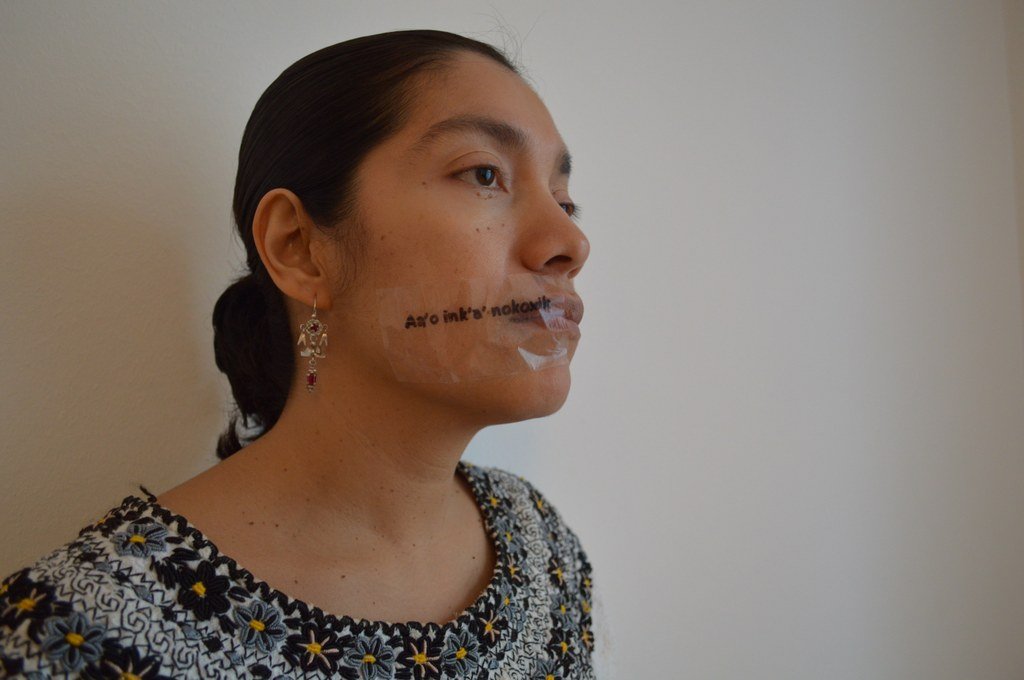The Academy at the 56th Venice Biennale
Flaka Haliti, Hristina Ivanoska, Sandra Monterroso, PhD-in-Practice students, and Heimo Zobernig, professor of textual sculpture—all four of them from the Academy of Fine Arts Vienna—will exhibit in the pavilions of their home countries at the 56th Venice Biennale.
This kind of recognition is something to be proud of: three students in the PhD-in-practice program at the Academy are taking part in this year's Venice Biennale. And not as "supporting artists" in the themed exhibition, but as official representatives of their home countries. That is, if one can speak of representation at all in this contex t.
That very issue is subject of Sandra Monterroso 's contribution to the Latin-American collective pavilion. In her sound installation Rokeb' iq' / Wind , the Guatemalan artist explores the indigenous dialects that are still spoken in Guatemala today but are at the same time suppressed in favor of the official language, Spanish. A total of 15 sound pieces will be played in the pavilion of the IILA (Instituto Italo-Latinoamericano), presented without images as one big intermeshing cacophony, from which, upon approaching each speaker, individual indigenous voices of the continent emerge.

Histrina Ivanoska und Yane Calovski, Chapel
(we are all in this alone) , Staatliche Kunsthalle
Baden-Baden, Foto: Michael Belogur
Another topos that is increasingly suppressed in Western contexts--namely that of faith and holiness--is the subject of the contribution by the Macedonian artist and Academy student Hristina Ivanoskain in collaboration with her partner Yane Calovski . Ivanoska and Calovski have adapted their project We are all in this alone for the Macedonian pavilion. Serving as architectural springboard for the project was the 12th-century Church of St. Gjorgi Kurbinovo and its extravagant Byzantine frescoes. The artists "transferred" these--abstracted and spatially remodeled--into a golden wall illustration, which in turn is embellished with a series of objects, collages, and other graphic elements.

Aus Flaka Halitis Ausstellung, Last time when I googled
you, you looked different , National Galery of Kosovo,
Foto: Enver Bylykbashi © Natianal Gallery of Kosovo
Flaka Haliti deals with a different kind of transcendence in her artwork for the Kosovo pavilion. Haliti intends to expand on her two solo exhibitions from last year: I See a Face. Do You See a Face , shown at MUMOK in Vienna in celebration of her winning the Henkel Art Award in 2013, as well as Last time when I googled you, you looked different at the National Gallery of Kosovo in Pristina. Deterritorialization is also to be applied to the idea of nation-state pavilions itself through Haliti's expansive multimedia installation bearing the title Speculating on the blue. Exactly how will not be made known in advance, only that the exhibit also relates to Okwui Enwezor's themed exhibition All the World's Futures , in particular its section "Garden of Disorder."
As well, the celebrated artist and lecturer at the Academy of Fine Arts Vienna, Heimo Zobernig , will be exhibiting in the Austrian pavilion at the 56th Venice Biennale. And last but not least, Monica Bonvicini , professor of performative art & sculpture since 2003, will be represented at Venezia for the fourth time. She will show a series of new sculptures in the exhibition All the World's Futures at the Arsenale, curated by Okwui Enwezor.
Text: Christian Höller, editor and co-publisher of the magazine springerin-Hefte für Gegenwartskunst.
